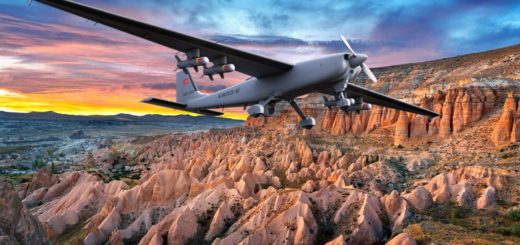US Air Force Orders 8 more MH-139A Grey Wolf Helicopters to Expand Nuclear Security Fleet
{loadposition bannertop}
{loadposition sidebarpub}
The U.S. Air Force placed a 173 million Lot 3 order with Boeing for eight MH-139A Grey Wolf helicopters, bringing the total aircraft under contract to 34. The additional airframes support nuclear missile field security, convoy escort, and rapid response missions as the program moves toward initial operational capability.
Boeing said on October 9, 2025, that the Air Force awarded a Lot 3 contract worth more than 173 million dollars for eight MH-139A helicopters, including training and sustainment, a follow-on to a seven-aircraft buy in April 2024. The award lifts the total Grey Wolf under contract to 34 and aligns with the service’s plan to recapitalize UH-1N Hueys with a faster, longer-range platform purpose-built for guarding intercontinental ballistic missile sites, moving security forces, and supporting senior leader transport. Program officials say 18 aircraft have been delivered to date as IOT&E wraps and units prepare for operational fielding.Follow Army Recognition on Google News at this link
An MH-139A Grey Wolf helicopter performs an Initial Operational Test and Evaluation mission over Malmstrom Air Force Base (Picture source: US DoD)
What is being bought is not an experimental airframe but a military adaptation of Leonardo’s AW139, assembled and militarized by Boeing for nuclear security, search and rescue, and troop and cargo transport missions. The Air Force’s requirement is blunt: replace the aging UH-1N fleet that still guards America’s intercontinental ballistic missile fields and supports senior leader transport. Programmatically, the latest award signals continued production maturation after last year’s seven-aircraft lot and aligns with the service’s push to field the Grey Wolf across the Northern Tier missile complex.
Boeing and Air Force officials frame the rationale in operational terms rather than branding. “The MH-139A offers increased speed, range, and payload capacity critical to supporting U.S. national security missions,” said Azeem Khan, the company’s MH-139 program director, while Leonardo underscores the value of leveraging a proven civil platform for military duty. Those program talking points track with where the Air Force is in the test cycle: Global Strike Command squadrons completed initial operational test and evaluation flights this year out of Malmstrom, a key prerequisite to fielding.
Under the skin, the Grey Wolf brings tangible upgrades that matter on long, frigid missile routes. The helicopter is powered by twin FADEC-controlled Pratt & Whitney Canada PT6 turboshafts feeding a main gearbox designed for survivability, and it carries an avionics suite built for secure military communications and navigation. Air Force data lists an armored cockpit and cabin, self-sealing fuel cells, a missile warning and countermeasures system, and provisions for two M240 machine guns. In service use the aircraft is designed for roughly three hours of endurance while cruising near 135 knots, a step change over the Huey’s pace and stamina in winter weather.
That mix translates into faster scramble times to convoy and security incidents across vast ICBM fields, better hot-and-high performance, and improved crew awareness from integrated sensors and secure radios. The cabin can lift security forces with gear and still keep a margin for medical or detainee transport, giving missile wings a single airframe that can pivot from patrol to personnel recovery without reconfiguring the fleet. Just as important for operators, the MH-139A adopts a modular open systems approach that should ease future sensor and software refreshes as threat warning suites evolve. Those qualities are already being wrung out in squadron-level sorties during the IOT&E period.
The procurement context is equally plain. April 2024’s seven-aircraft order nudged the program toward full-rate production; Wednesday’s addition of eight continues that slope and sends a clear signal to missile wings preparing basing, training pipelines, and maintenance lines. Unit price trends cited by industry suggest production learning is taking hold, even as Boeing completes deliveries to early operational units at Malmstrom and prepares the Minot stand-up. For readers tracking numbers, the running total now sits at 34 aircraft on contract.
The move is a small but telling brick in the wall of U.S. nuclear deterrence. As Washington recapitalizes the land-based leg with Sentinel and hardens nuclear command and control, it also needs air mobility that can survive contested environments and keep security forces moving when weather, jamming, or harassment complicate routine patrols. Russia’s nuclear signaling and China’s rapid strategic expansion raise the bar for day-to-day missile field security. Replacing Hueys with Grey Wolves will not deter deterrence by itself, but it tightens the weave of a nuclear enterprise that depends on credible response at the edges as much as it does on warheads and silos.

{loadposition bannertop}
{loadposition sidebarpub}
The U.S. Air Force placed a 173 million Lot 3 order with Boeing for eight MH-139A Grey Wolf helicopters, bringing the total aircraft under contract to 34. The additional airframes support nuclear missile field security, convoy escort, and rapid response missions as the program moves toward initial operational capability.
Boeing said on October 9, 2025, that the Air Force awarded a Lot 3 contract worth more than 173 million dollars for eight MH-139A helicopters, including training and sustainment, a follow-on to a seven-aircraft buy in April 2024. The award lifts the total Grey Wolf under contract to 34 and aligns with the service’s plan to recapitalize UH-1N Hueys with a faster, longer-range platform purpose-built for guarding intercontinental ballistic missile sites, moving security forces, and supporting senior leader transport. Program officials say 18 aircraft have been delivered to date as IOT&E wraps and units prepare for operational fielding.
Follow Army Recognition on Google News at this link
An MH-139A Grey Wolf helicopter performs an Initial Operational Test and Evaluation mission over Malmstrom Air Force Base (Picture source: US DoD)
What is being bought is not an experimental airframe but a military adaptation of Leonardo’s AW139, assembled and militarized by Boeing for nuclear security, search and rescue, and troop and cargo transport missions. The Air Force’s requirement is blunt: replace the aging UH-1N fleet that still guards America’s intercontinental ballistic missile fields and supports senior leader transport. Programmatically, the latest award signals continued production maturation after last year’s seven-aircraft lot and aligns with the service’s push to field the Grey Wolf across the Northern Tier missile complex.
Boeing and Air Force officials frame the rationale in operational terms rather than branding. “The MH-139A offers increased speed, range, and payload capacity critical to supporting U.S. national security missions,” said Azeem Khan, the company’s MH-139 program director, while Leonardo underscores the value of leveraging a proven civil platform for military duty. Those program talking points track with where the Air Force is in the test cycle: Global Strike Command squadrons completed initial operational test and evaluation flights this year out of Malmstrom, a key prerequisite to fielding.
Under the skin, the Grey Wolf brings tangible upgrades that matter on long, frigid missile routes. The helicopter is powered by twin FADEC-controlled Pratt & Whitney Canada PT6 turboshafts feeding a main gearbox designed for survivability, and it carries an avionics suite built for secure military communications and navigation. Air Force data lists an armored cockpit and cabin, self-sealing fuel cells, a missile warning and countermeasures system, and provisions for two M240 machine guns. In service use the aircraft is designed for roughly three hours of endurance while cruising near 135 knots, a step change over the Huey’s pace and stamina in winter weather.
That mix translates into faster scramble times to convoy and security incidents across vast ICBM fields, better hot-and-high performance, and improved crew awareness from integrated sensors and secure radios. The cabin can lift security forces with gear and still keep a margin for medical or detainee transport, giving missile wings a single airframe that can pivot from patrol to personnel recovery without reconfiguring the fleet. Just as important for operators, the MH-139A adopts a modular open systems approach that should ease future sensor and software refreshes as threat warning suites evolve. Those qualities are already being wrung out in squadron-level sorties during the IOT&E period.
The procurement context is equally plain. April 2024’s seven-aircraft order nudged the program toward full-rate production; Wednesday’s addition of eight continues that slope and sends a clear signal to missile wings preparing basing, training pipelines, and maintenance lines. Unit price trends cited by industry suggest production learning is taking hold, even as Boeing completes deliveries to early operational units at Malmstrom and prepares the Minot stand-up. For readers tracking numbers, the running total now sits at 34 aircraft on contract.
The move is a small but telling brick in the wall of U.S. nuclear deterrence. As Washington recapitalizes the land-based leg with Sentinel and hardens nuclear command and control, it also needs air mobility that can survive contested environments and keep security forces moving when weather, jamming, or harassment complicate routine patrols. Russia’s nuclear signaling and China’s rapid strategic expansion raise the bar for day-to-day missile field security. Replacing Hueys with Grey Wolves will not deter deterrence by itself, but it tightens the weave of a nuclear enterprise that depends on credible response at the edges as much as it does on warheads and silos.






